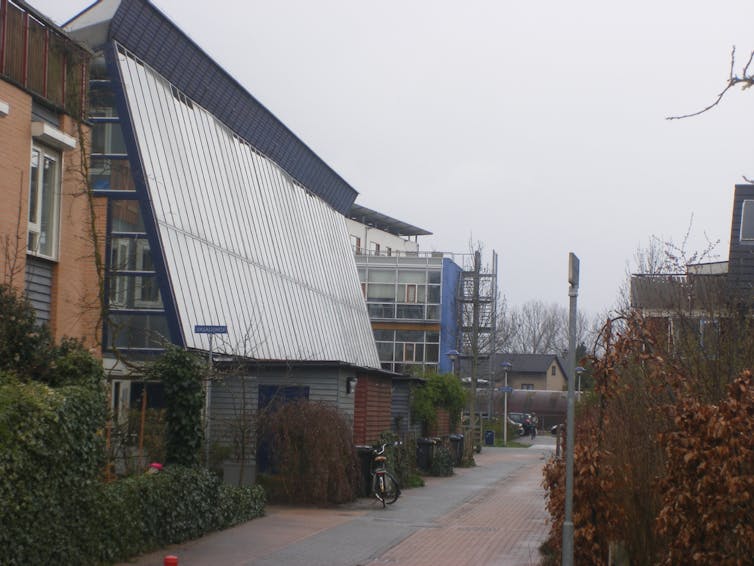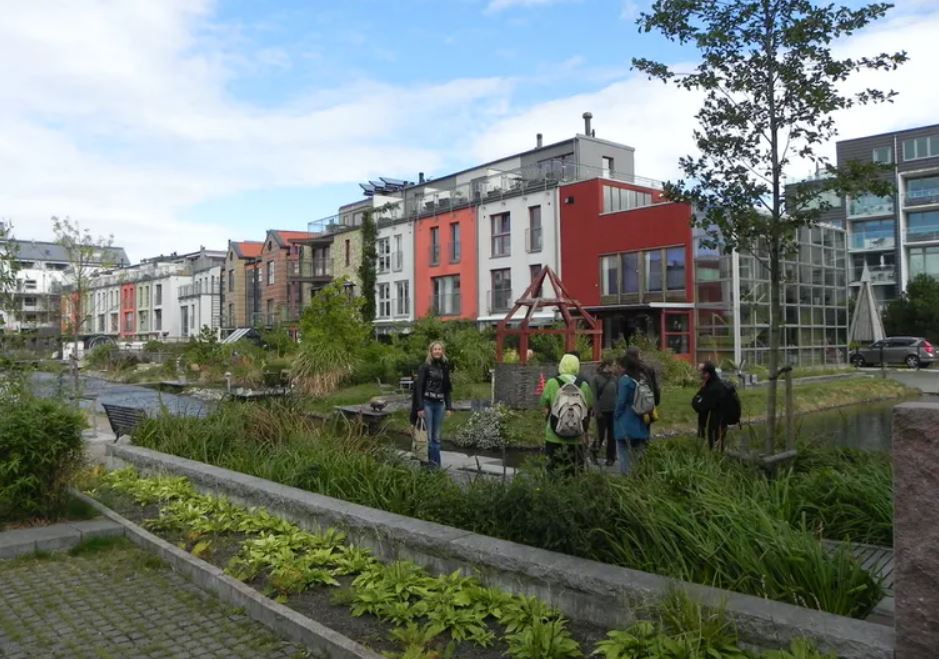Just Add Green
URBAN PLANNERS HAVE THE SOLUTIONS BUT ARE THEY IMPLEMENTED?
Green infrastructure refers to standalone and strategically networked environmental features designed for environmental, social and economic benefits. Examples include permeable surfaces, green walls, green roofs and street trees.
Benefits of green infrastructure include reduced urban heat, lower building energy demand and improved storm-water management. There may be drawbacks, but these can often be mitigated through good design. Issues include maintenance costs, tree roots, bushfire hazard and power-line interference.
Urban planners are increasingly asked to create and deliver urban greening strategies. So how does green infrastructure delivery fit within the capabilities and remit of planning?
Working through the planning process
Planning systems play a key role in shaping the form and function of cities. Standardised planning processes are used globally. These include plan-making, development management, urban design and pre-planning consultations.
Research by our group shows that green infrastructure can be delivered relatively easily using existing planning processes. It does not require major changes to established practice.
Plan-making is the most fundamental of all these processes. Plans can provide strategic frameworks for delivering green infrastructure. These provide an overarching vision of green infrastructure delivery and allow for phased implementation over set time scales.
A key question is: should green infrastructure priorities feature in general urban development plans or in separate, bespoke plans? Opinion varies, but we see advantage in creating customised green infrastructure plans.
Our view is that dedicated plans can establish green infrastructure as a separate priority, distinct from “business-as-usual” issues – where it might get overlooked. Overarching green infrastructure objectives can be established in dedicated plans. These can then be explicitly linked to development and design standards codified in broader urban development plans.
The expertise required to create substantive and deliverable green infrastructure priorities may extend beyond the capacity of planners. Involving other professional stakeholders can increase the potential for successful plan-making. Our research identifies engineers, transport consultants, architects and emergency services personnel as valuable collaborators.
Codifying design standards for materials, buildings and space is another important planning process. Green infrastructure delivery improves when planning systems create supportive design standards and embed them in plans. Development management and urban design processes can then direct green infrastructure delivery in new builds and redevelopments.
 EVA Lanxmeer, the Netherlands. Tony Matthews
EVA Lanxmeer, the Netherlands. Tony Matthews
Pre-planning consultation also has a role to play. It can be used from an early stage to determine the technical and cost issues that green infrastructure can pose for developments. Pre-planning consultation can establish green infrastructure provision as a required development standard, with associated costs, from the outset.
Changes in design standards can encounter resistance from property owners and developers. To counter this, planning authorities can demonstrate the many benefits of green infrastructure. This can help build support for the technology and further its acceptability and ubiquity.
Where planning is rising to the challenge
Evidence of planning processes being used to facilitate green infrastructure is increasing. For example, the city of Toronto, Canada, made green roofs compulsory in 2009. Requirements for green roof coverage increase with building footprint sizes and can only be reduced with financial penalty and permission from the chief planner.
A best-practice example of planning-led green infrastructure provision can be seen in the Bo01 development in Malmö, Sweden. Here, development plans, design standards, stakeholder consultation and pre-planning consultations ensure green infrastructure is central to all development.
Lessons learned from two other developments – EVA Lanxmeer and Delft Zuidoost, both in the Netherlands – shaped approaches used in Bo01.
Changing mindsets
Existing planning processes, common throughout the world, can accommodate green infrastructure provision relatively easily.
Some of the many examples of successful demonstration are noted here. Many initiatives, ideas and practices are internationally transferable because of similarities in the constitution and function of planning systems.
So why aren’t we seeing more green infrastructure generally? Partly it is because planners are wary of new technologies and disruption to embedded practices. With this in mind, might the biggest challenge for planners be psychological rather than professional?





